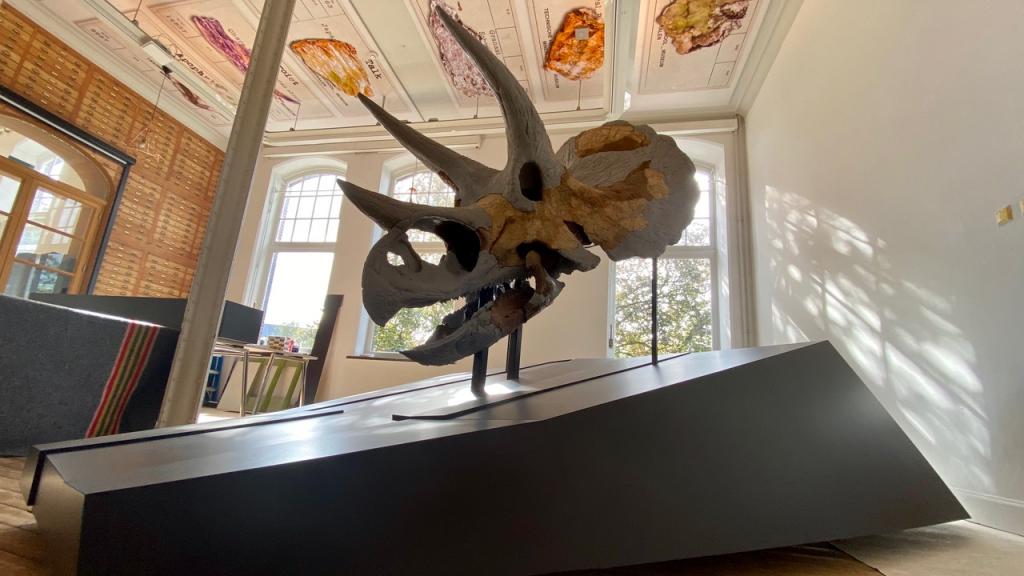Using traditional and modern techniques, scientists and craftsmen restored the skull of a dinosaur that lived millions of years ago. Find out how they did this.
The restored skull of the 66 million year old Triceratops prorsus. (Photo: Science Centre TU Delft)
Some 66 million years ago, Skull 21 was the head of a large dinosaur (Triceratops prorsus) in what would later become North America. It was about nine metres long, three metres tall, and weighed 13 tonnes. In 1891, a team from Yale University salvaged the skull of the Triceratops and in 1956 it was shipped to Delft as part of an exchange. TU Delft got the skull and Yale was offered part (only doubles) of the Timor collection – a collection of fossil shells that tell a lot about marine life in a particular period.
Nothing but fragments
Unfortunately, the ship that transported the skull was caught in a storm and its cargo was severely battered. When the crate was opened at its destination in Delft, the Mineralogical Museum, it had been reduced into more than a hundred fragments. Doctor Pieter Kruizinga, then the Curator at the Museum, restored the skull. But he made some mistakes, so now the enormous skull of this ancient creature is being restored once again.
Scientists and craftsmen have set out to reconstruct the skull using a unique combination of cutting-edge technology and tried and tested techniques. It is a time consuming and labour intensive process which was documented by TU Delft TV:
The first step of the reconstruction is to clean the different parts of the skull. This involves removing old sediment and plaster. Recognising the difference between fossilised sediment and plaster, and bones, is a very specialised job, says restoration expert Aart Walen. Since the skull spent 66 million years in the ground, it has been deformed by geological processes. Van Walen explains. “The skull has been under a lot of pressure from the weight of the earth. I will try to separate the parts and glue them back at the right angle. Now it’s like a broken bone. It’s like a puzzle.”
Solving the puzzle
That puzzle was solved with the help of the Paleontological Museum in Munich, which also has a Triceratops skull in its collection. The team managed to scan the Munich skull in 3D which allowed them to digitally reconstruct the one in Delft. They then translated that reconstruction into files for 3D printing and patched the skull back together with the help of 3D printed pieces.
- Also read: ‘Dinosaur skull rises from a 3D point cloud.
“While the main goal is to reconstruct it as accurately as possible, we also want to see how the different technologies can do this and do it better than in the past,” explains 3D model maker Javid Jooshesh. “In the past, these technologies were not available. They reconstructed the skull on the basis of many assumptions and measurements that were not accurate. But now we have the means to achieve an accurate result.”
TU Delft TV / TU Delft TV is a collaboration between Delta and the Science Centre. The crew consists of TU Delft students.



Comments are closed.